I have a great fondness for compact 35-mm cameras. There’s something undeniably liberating about a camera equipped with just the bare essentials — it frees the mind and promotes spontaneous picture taking. I certainly get a lot of use from recent-vintage, auto-everything models, like the Pentax Espio Mini I described here. But the best of the breed are rangefinder cameras from the ‘60s and early ‘70s, when magnificent beasts such as the Canonet QL and Yashica Electro roamed the photography landscape. One of the finest from that heyday is also one of the least often regarded — the Olympus 35RC.
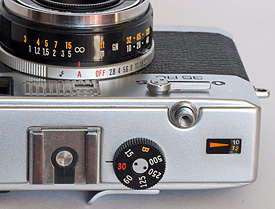
The top of the 35RC is home to the shutter-speed dial and frame counter. The control ring on the lens lets the user select from shutter--priority automatic (A) or full manual control.
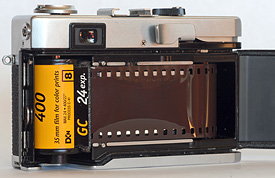
One rarely noted advantage of compact 35mm cameras is the potential for great film economy thanks to the short distance between the film supply and take-up. It's not unusual to get 39 shots from a 36-exposure roll with the RC.
The 35RC has two things going for it. First, it’s tiny. It measures only 110mm × 75mm × 30mm (4.3 × 3.0 × 2.4 inches), excluding the lens, which protrudes 20mm (0.8 inches) from the camera body. That means you can easily slip the 35RC into your jacket pocket. The second big plus is that you have complete control over the camera’s operation. This is no mere point-and-shoot.
The 35RC normally operates in shutter-priority mode. That means you choose the shutter speed and the camera selects the f/stop based on lighting conditions. Although I generally prefer aperture-priority automatic, shutter priority essentially amounts to the same thing — you’re still in charge of selecting one of the aperture/shutter combinations that yields the correct exposure, but you do so with the shutter dial instead of the aperture ring. The nice thing about the RC is that its viewfinder displays both settings, so you know at a glance what the camera is doing without having to take your eye off the scene. Very quick, very neat.
Real control freaks also have the option of going fully manual, though once you move the f/stop ring from “A” (for automatic) to one of the aperture settings, you disengage the camera’s light meter. Still, this is an occasionally handy feature that provides a fail-safe in case the camera’s battery dies. With full manual control, you’re at least still in the game, though you’ll have to use your best-guess “Sunny 16” estimate to set the exposure.
The 35RC has a number of very useful features. For instance, if there’s not enough (or too much) light for your current settings, the shutter won’t fire. This is a great safety that prevents you from taking a picture when you’ve left the lens cap on — something that’s all too easy to do with rangefinder cameras. Another feature I use a lot is the shutter-release half-press to lock in the exposure. This is especially useful for back-lit scenes — aim at the subject, lock in the exposure, re-frame, then take the shot.
Perhaps the 35RC’s most unexpected feature is its ability to automatically set the correct f/stop for flash photography. It does this by cleverly taking the focus-distance setting into account when calculating the lens aperture needed for the exposure. It’s a surprisingly sophisticated and useful level of flash integration for such a basic camera.
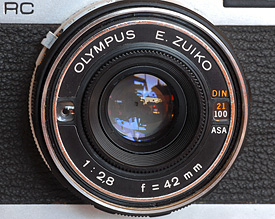
The 35RC accepts 43.5mm filters. The ISO setting is selected by rotating the inner, knurled ring surrounding the lens.
Aside from everything I’ve mentioned already, what really makes the 35 RC a firm favourite is the quality of the images it produces. It’s amazing. The 42mm f/2.8 lens is as sharp as one could wish, and the exposure system is dead on. I’ve used my 35 RC for an uncountable number of slides, and can’t recall a single shot where the exposure was blown. Compared with some of the more popular cameras in this class, such as the Yashica Electro or Canon Canonet, the Olympus 35 RC is smaller, lighter, and more feature rich. Certainly, if street photography is something you enjoy, the 35RC’s discrete size, quick-and-easy operation, and quiet shutter make it an excellent choice. Indeed, if you’re content with a fixed focal length lens, the 35 RC just might be all the camera you’ll ever need, no matter what you like to photograph.
Did you find this article interesting or helpful? If so, consider using this link the next time you shop at Amazon.com. Better yet, bookmark it for future use. Thanks to Amazon’s associates program, doing so costs you nothing yet helps keep this site up and running. Thanks!
For more of my camera reviews, click here.

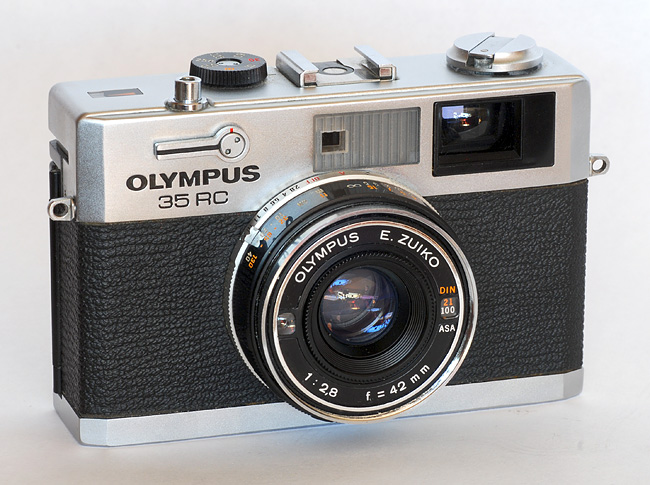
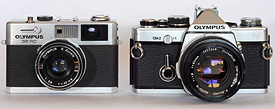


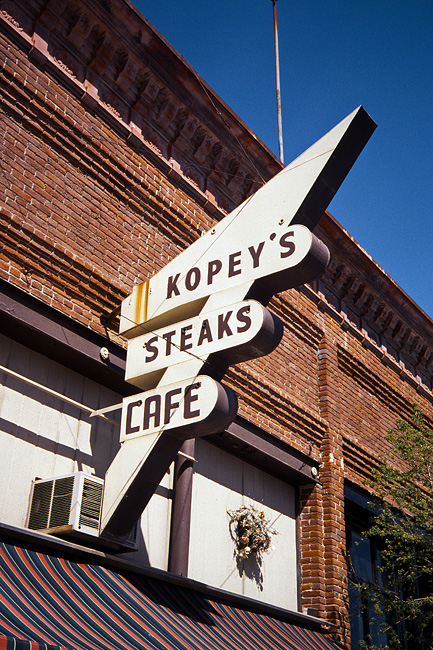
 Subscribe with RSS
Subscribe with RSS



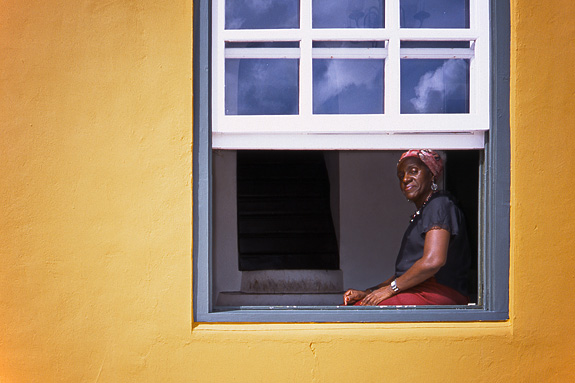


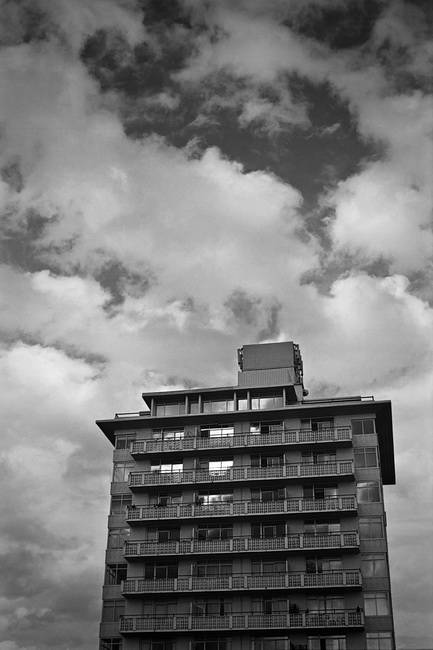

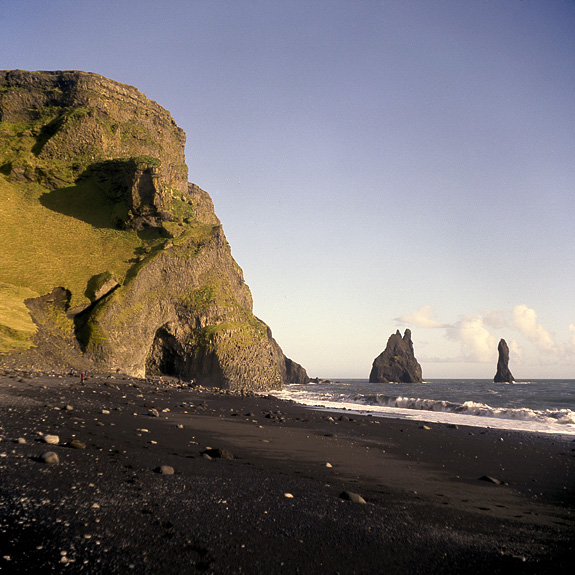
I love my 35RC also. Picked mine up at a flea market for $20. Couldn’t be happier with the results.
I agree. A great little camera.
Hi Gary, I just found one of these that looks functional (it still had film in it, not too old looking). What do you use for batteries and where do you get them in Victoria! Thanks!
Hearing-aid batteries (Energizer 675s). London Drugs. Cheap, and they work great with the camera. I stack two on one side of the battery compartment, and fill the other side with aluminim foil. Congratulations — I think you’re going to want to retire your Canon DSLR now!
Gary
I have two of them and they are my favourite 35mm cameras. I generally prefer medium format, and I reckon if I’m going to carry a 35mm camera it may as well score on compactness.
I use a 43.5mm – 52mm step up ring so that I can share filters with a wide range of other cameras.